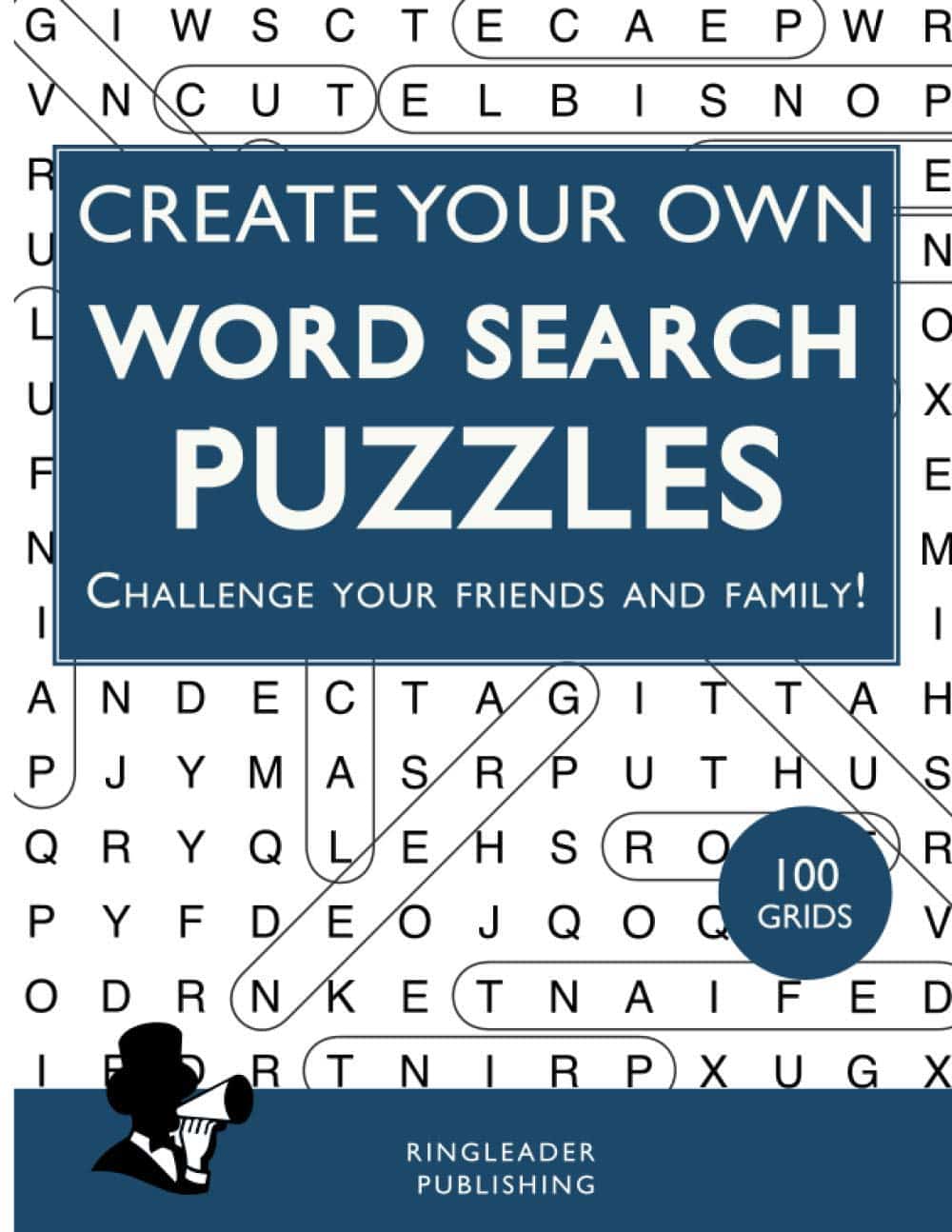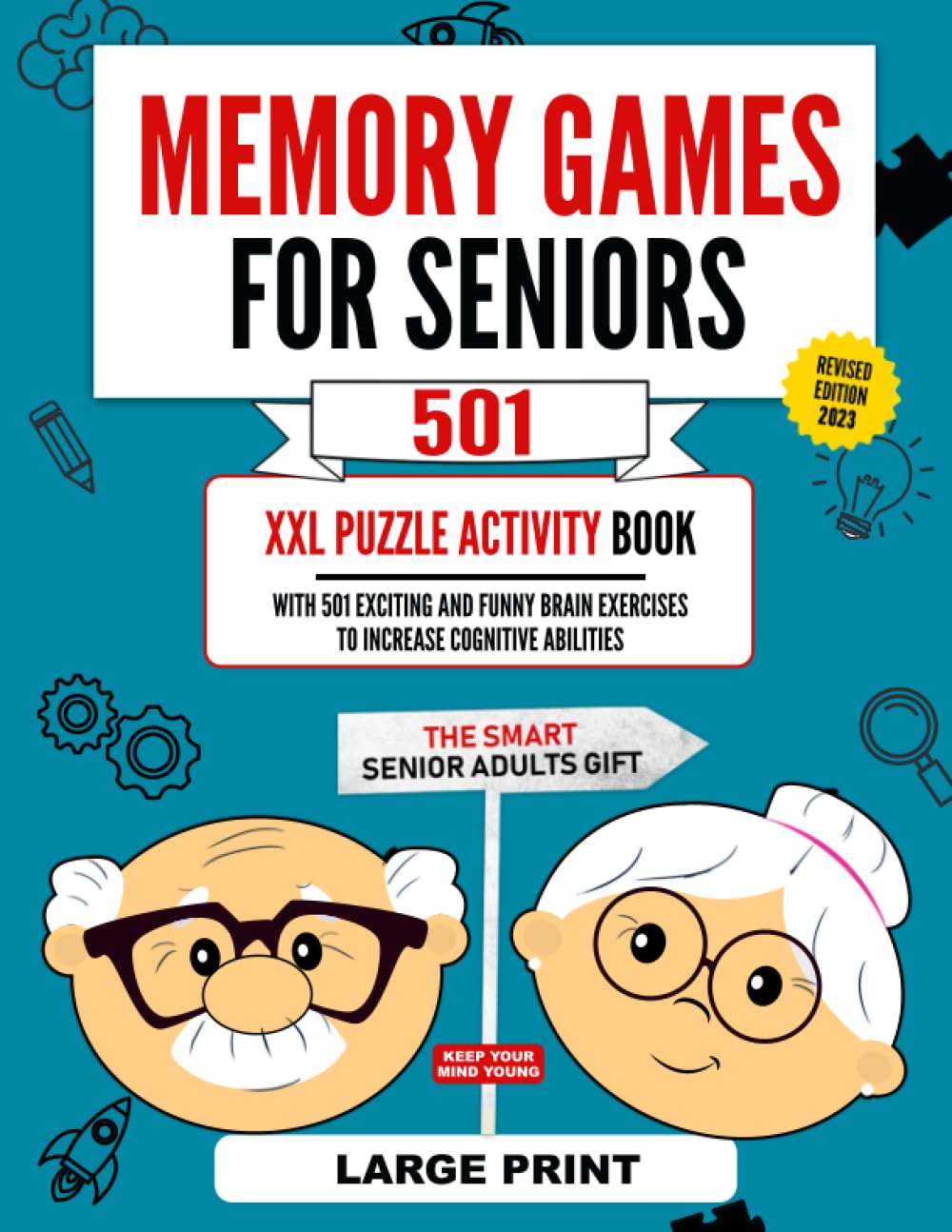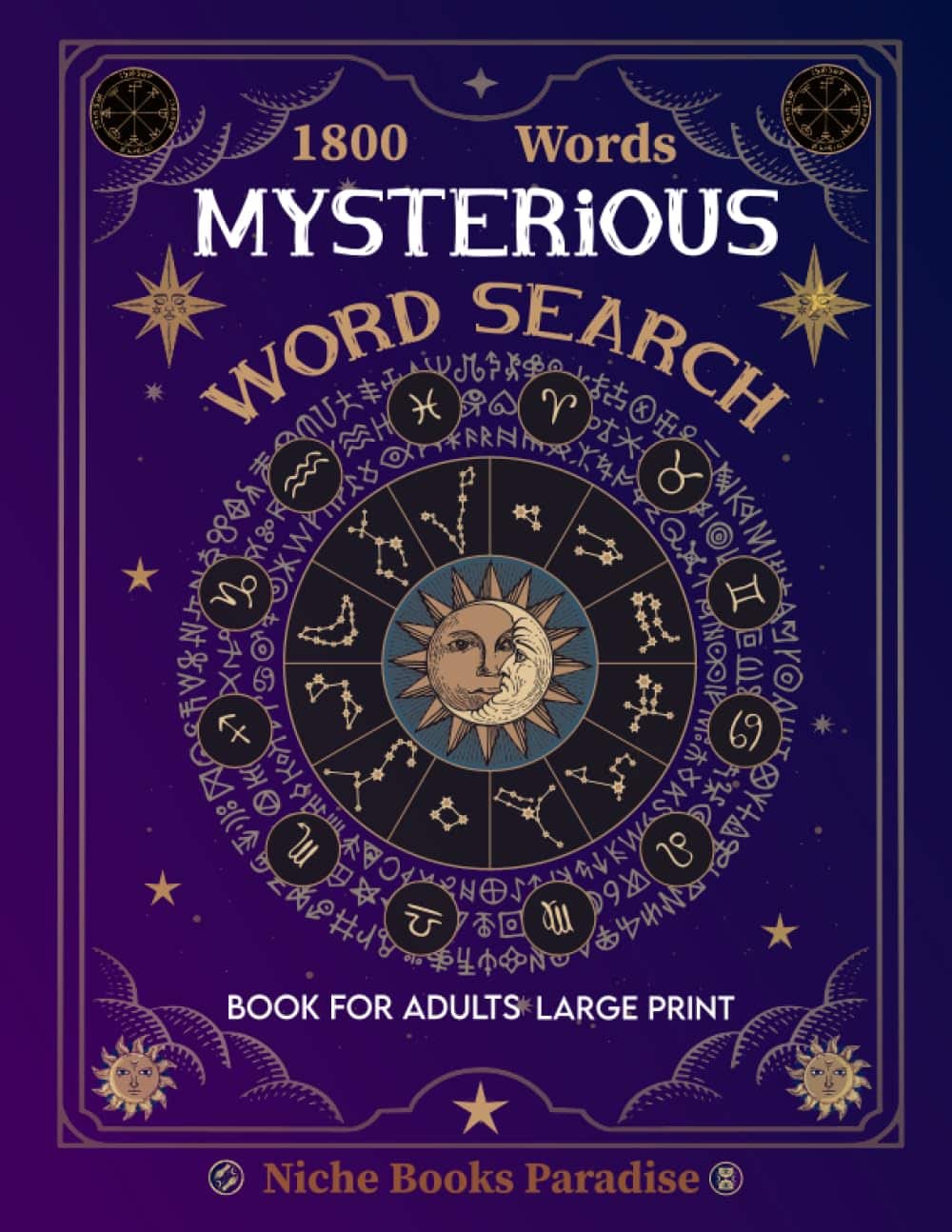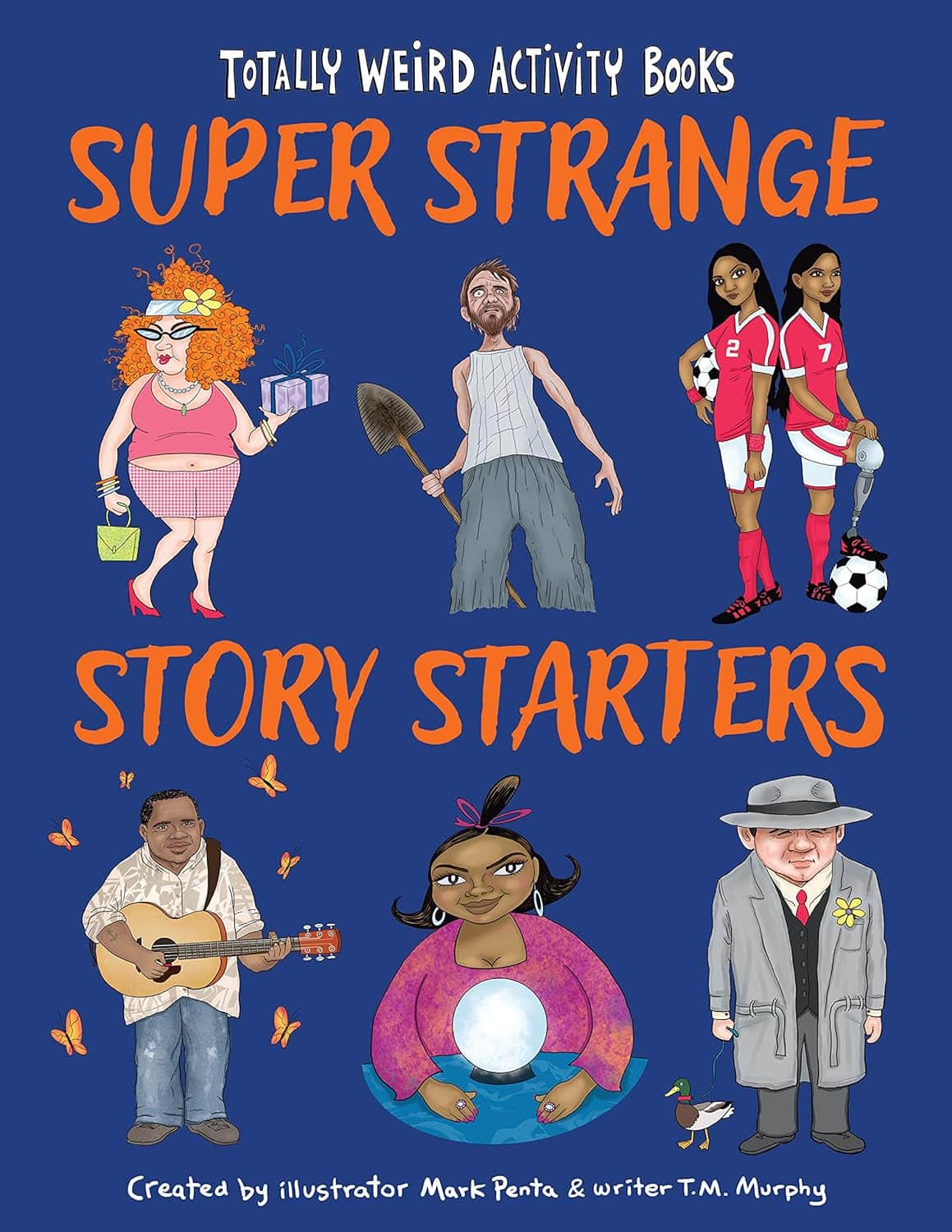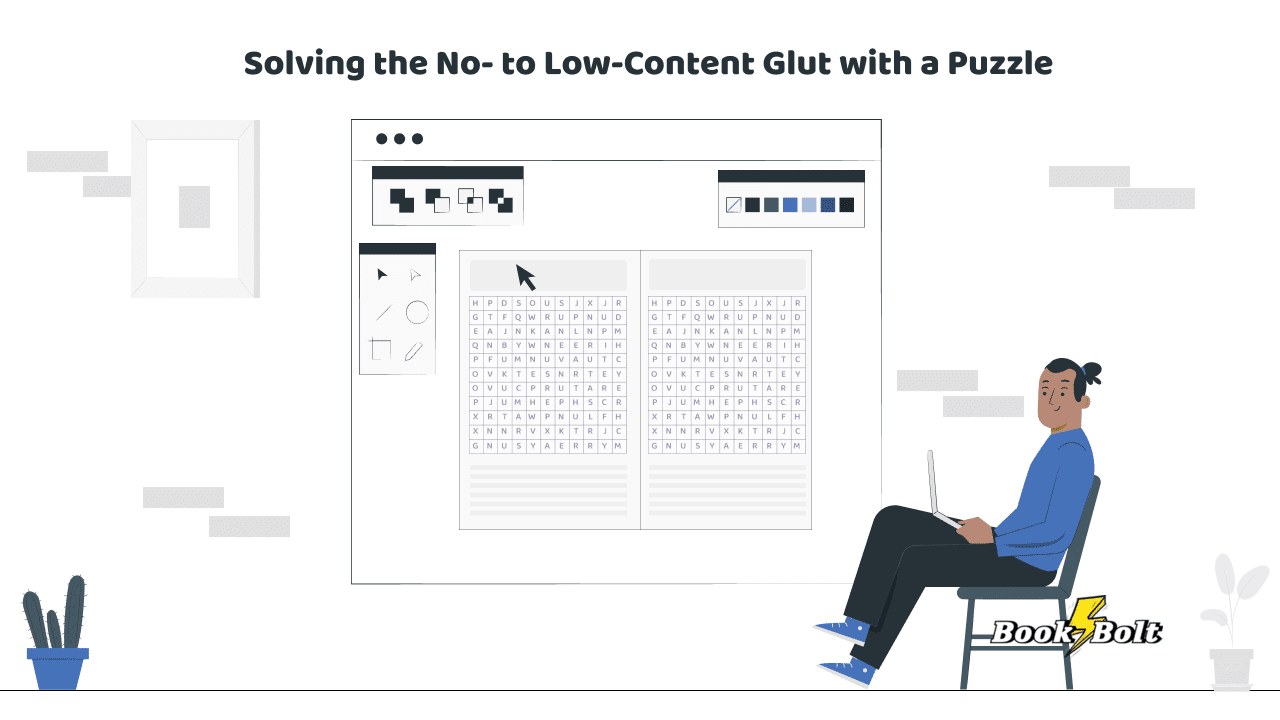
There’s no doubt that the low-bar to entry for Amazon KDP, especially in the no- to low- content book space, has created a flood of product. With economic headwinds coming and increasing competition, it may seem harder to get your product to stand out.
Two ways to improve your chances are a) leveling up to long-form books or b) going the opposite direction: ultra-nichefication (yes, we coined this term).
We’re going to focus on the latter. It is an expansion for the no-content book publisher, but not a giant leap to the world of novels or non-fiction books. It’s the humble puzzle book. They are surprisingly simple to create, and if you find a properly underserved niche (and we’re going to had you a LOT of them), you can make consistent sales.
The Puzzle Book Phenomenon
Puzzle books have captured the hearts and minds of readers across different age groups for several reasons. Parents often turn to these books to stimulate their children’s memory, enhance logical thinking, and expand their vocabulary. Not only are puzzle books an excellent source of entertainment, but they also serve as valuable educational tools.
For adults, puzzle books offer a unique blend of relaxation and mental exercise. Solving puzzles can help maintain cognitive function, reduce stress, and contribute to improved overall mental health. The multifaceted benefits of puzzle books have contributed to their soaring demand in recent years.
Unlocking the Profit Potential
What sets puzzle books apart from other low-content book categories is their complexity. While creating puzzle books may require more effort and creativity, it also allows for higher pricing flexibility and more substantial profit margins. Let’s delve into the profitability of puzzle books with a real-life example:
Imagine a puzzle book currently ranked at position 1674 in the best-selling books category, generating $3 in royalties per sale. Calculations reveal that this particular book sells approximately 100 copies daily, resulting in a remarkable daily profit of $300 from just one book. This success story underscores the robust demand for puzzle books and their incredible profit potential.
Diverse Types of Puzzle and “Puzzle-Adjacent” Books
The world of puzzle books is incredibly diverse, catering to various preferences and age groups. Here are some popular types of puzzle books:
- Crossword Puzzle Books: Crossword puzzles challenge readers with clues to fill in a grid of squares, creating words both horizontally and vertically.
- Sudoku Puzzle Books: Sudoku puzzles require logical thinking and number placement within a grid to ensure each row, column, and subgrid contains all digits from 1 to 9.
- Cryptogram Puzzle Books: Cryptograms involve deciphering encoded messages, adding an element of mystery and intrigue to the puzzle-solving experience.
- Math Puzzle Books: These books feature math-related puzzles and challenges, appealing to those who enjoy numbers and equations.
- Word Search Puzzle Books: Word search puzzles task readers with finding specific words hidden within a grid of letters.
- Activity Books: These books often include a variety of puzzles, such as mazes, dot-to-dots, and brain teasers, offering a well-rounded entertainment experience.
- Trivia Books: It is amazing how much people know about very specific subjects, and a short stint on Google will provide you with dozens, if not hundreds of questions to challenge the memories of experts.
While creating complex puzzle book interiors may seem daunting, there are tools and resources available to simplify the process. For instance, Book Bolt’s Puzzle Generator software can generate interiors for various puzzle book types.
Laser-targeted Niches
Before entering the puzzle book market, it’s essential to identify less competitive sub-niches and target audiences. We’ll save you the trouble of researching these sub-niches. You’re welcome.
Puzzle Books:
- Puzzle books for adults: Engaging puzzles designed for grown-ups seeking mental challenges.
- Puzzle books for kids: Fun and educational puzzles tailored to children’s interests and skill levels.
- Puzzle books for seniors: Stimulating puzzles suitable for older adults.
- Puzzle books for teens: Entertaining puzzles designed to engage teenagers’ minds.
- Puzzle books for girls: Puzzle books with themes and content that appeal to young girls.
- Puzzle books for women: Puzzles that resonate with a female audience.
- Puzzle books with a variety: A diverse collection of puzzles in a single book.
- Puzzle books with large print: Puzzles with easy-to-read text, ideal for individuals with visual impairments.
- Puzzle books with pictures: Visual puzzles that require readers to identify and solve challenges based on images.
- Puzzle books with numbers: Numeric puzzles and challenges.
- Puzzle books for seniors with dementia: Specially designed puzzles for seniors dealing with dementia.
- Puzzle books for seniors with beginning dementia: Puzzles suitable for seniors in the early stages of dementia.
- Crossword puzzle books: Books focused exclusively on crossword puzzles, and entire crossword puzzle books can be built around an even nichier theme
- Word search puzzle books: Books centered around word search puzzles.
- Cryptogram puzzle books: Books featuring cryptogram challenges.
- Math puzzle books: Books filled with math-related puzzles.
- Classroom puzzle books: Puzzles for educational settings, including schools and classrooms.
- Travel puzzle books: Compact puzzle books ideal for on-the-go entertainment.
- Puzzle books for clever kids: Challenging puzzles designed to enhance children’s problem-solving skills.
- Brain games puzzle books: Puzzles that stimulate cognitive function and mental agility.
Activity Books:
- Car activity books: Puzzle books designed to keep passengers entertained during car rides.
- Kindergarten activity books: Educational and engaging puzzles suitable for kindergarten-aged children.
- Baby activity books: Interactive books that encourage sensory exploration and early learning.
- Teen activity books: Puzzles and activities tailored to the interests of teenagers.
- Travel activity books: Compact puzzle books perfect for travelers and vacations.
- Math activity books: Math-related puzzles and challenges for various age groups.
- Funny activity books: Hilarious puzzles and activities designed to tickle the funny bone.
- Activity books for adults in Spanish: Spanish-language puzzle books for adult readers.
- Activity books for adults with an autumn theme: Seasonal puzzle books with autumn-inspired content.
- Activity books with dinosaurs: Dinosaur-themed puzzles and activities for young enthusiasts.
- Activity books for kindergarteners: Engaging puzzles suitable for kindergarten-aged children.
- Activity books for couples: Puzzles and activities designed for couples to enjoy together.
- Activity books with princess themes: Princess-themed puzzles and activities, perfect for young royalty.
Sudoku Books:
- Sudoku for adults: Sudoku puzzles designed for adult enthusiasts.
- Sudoku for kids: Kid-friendly Sudoku puzzles for younger players.
- Sudoku in large print: Sudoku puzzles with easy-to-read numbers and grids.
- Medium sudoku: Sudoku puzzles with a moderate level of difficulty.
- Medium to hard sudoku: Challenging Sudoku puzzles that gradually increase in difficulty.
- Very hard sudoku: Extremely challenging Sudoku puzzles for experienced solvers.
- Extreme sudoku: The toughest Sudoku puzzles, designed to test even the most seasoned players.
- Super sudoku: Larger Sudoku grids with additional complexity.
- Sudoku book large print: Sudoku puzzle books with large, clear numbers.
- Sudoku and jumble word gift: Puzzle books featuring both Sudoku and word jumble challenges, ideal for gifting.
- Sudoku and kakuro puzzle book: Puzzle books combining Sudoku and Kakuro challenges.
- Sudoku with over 500 puzzles: High-value Sudoku books packed with a vast number of puzzles.
- Sudoku with over 150 puzzles: Sudoku books with a generous selection of puzzles.
- Sudoku with printed candidate numbers: Sudoku puzzles that provide printed candidate numbers for added convenience.
- Sudoku with balls: Unique Sudoku puzzles featuring ball-shaped grids.
- Sudoku with pictures: Sudoku challenges that incorporate visual elements.
- Sudoku with solutions: Sudoku books that include solutions for all puzzles.
- Sudoku with full solutions: Sudoku puzzle books with detailed step-by-step solutions.
- Sudoku with shapes: Sudoku puzzles with unique and visually appealing shapes.
These sub-niches provide a starting point for your puzzle book publishing journey. You can also experiment by combining keywords or conducting deeper research to discover untapped niche opportunities.
Creating Engaging Puzzle Content
Now that you’ve explored the diverse landscape of puzzle books and identified potential niches, it’s crucial to understand how to create engaging and high-quality puzzle content. Here are some essential tips and considerations:
1. Tailor Puzzles to Your Target Audience:
When creating puzzle books, always keep your target audience in mind. Consider their age, interests, and skill levels. For instance, puzzles for children should be age-appropriate, engaging, and educational. On the other hand, puzzle books for adults can feature a wide range of challenges, from relaxing to brain-teasing.
2. Balance Difficulty Levels:
Whether you’re designing Sudoku puzzles or crosswords, it’s essential to strike a balance between puzzle difficulty levels. Include puzzles that cater to various skill levels within your chosen niche. This ensures that both beginners and experienced solvers can enjoy your books.
3. Maintain Clarity and Readability:
Clear and readable puzzle layouts are crucial for a positive reader experience. Ensure that puzzle grids, clues, and instructions are easy to understand. Use high-quality images and fonts to enhance clarity.
4. Provide Solutions:
Include solutions or answers to the puzzles in your books. Readers often appreciate having access to solutions, especially when they get stuck on a challenging puzzle. Including solutions builds trust and encourages repeat purchases.
5. Be Original and Creative:
Differentiate your puzzle books by injecting creativity and originality into your content. Consider creating themed puzzle books or incorporating unique twists into classic puzzle types. Originality can set your books apart in a competitive market.
6. Design Appealing Covers and Interiors:
Book covers play a significant role in attracting potential buyers. Design eye-catching covers that reflect the essence of your puzzle books. Additionally, ensure that the interior layout is visually appealing and complements the overall theme of the book.
7. Test and Refine:
Before publishing, test your puzzles to ensure accuracy and solvability. Gather feedback from beta readers or testers to identify any issues or areas for improvement. Continuously refine your puzzle books based on feedback and market trends.
8. Stay Informed About Copyright and Trademarks:
Avoid copyright infringement by creating original puzzles or obtaining proper licensing for any third-party content you include in your books. Respect trademarks and intellectual property rights when creating themed puzzle books.
With a deep understanding of very specific target audiences, creating engaging puzzles, and effectively marketing your books, you can embark on a fulfilling journey as a puzzle book publisher. Whether you choose to create puzzle books for children, adults, or specialized sub-niches, the opportunities in this genre are as vast and diverse as the puzzles themselves. Embrace the challenge, tap into your creativity, and let your puzzle books captivate readers while generating a rewarding income.
